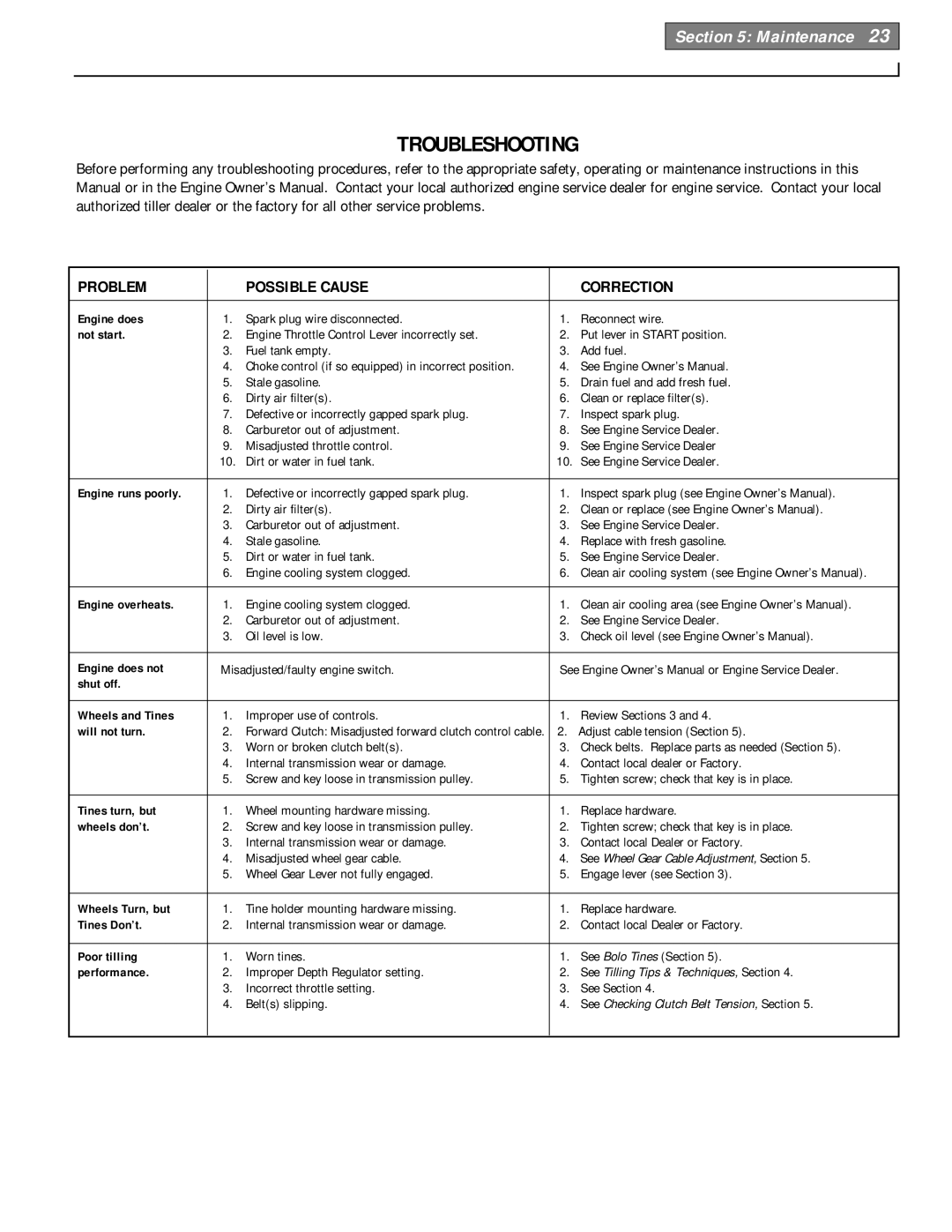12226 specifications
The Bolens 12226 is a powerful and versatile two-stage snowblower designed to tackle heavy snowfall and icy conditions with ease. It stands out in the market for its robust construction and innovative technologies, making it an essential tool for homeowners living in regions prone to harsh winter weather.At the heart of the Bolens 12226 is its reliable 208cc PowerMore engine, engineered for maximum performance and durability. The engine's 4-cycle design ensures efficient fuel use while providing ample torque to handle the toughest of snow. This snowblower features a 26-inch clearing width, allowing it to clear large swathes of snow in a single pass, significantly reducing the time spent on snow removal.
One of the standout characteristics of the Bolens 12226 is its two-stage snow clearing system. In the first stage, the auger collects snow and ice, which is then propelled into the second stage, where an impeller throws the snow out of the chute. This efficient design is ideal for tackling heavy, compacted snow and can easily handle drifts and deeper accumulations.
The snowblower's adjustable chute can rotate up to 200 degrees, allowing the user to direct the snow exactly where they want it to go. The built-in deflector provides further customization, enabling operators to control the height of the discharge, whether they’re clearing a driveway or a sidewalk. This flexibility ensures that users can adapt to various snow conditions and landscapes.
For ease of operation, the Bolens 12226 includes a self-propelled feature with six forward speeds and two reverse speeds, offering comfortable maneuverability across diverse terrains. The large, deep-tread tires enhance traction, providing stability and control even on icy surfaces.
Safety and convenience are key features as well; the snowblower comes equipped with an electric start for hassle-free ignition, eliminating the need for strenuous pull starts in cold weather. Additionally, the ergonomic control panel allows for easy operation, ensuring that users have a comfortable experience while tackling winter challenges.
In summary, the Bolens 12226 is a well-engineered snowblower that merges power and ease of use. With its robust engine, efficient two-stage clearing system, adjustable chute, and user-friendly features, it is an invaluable tool for anyone needing to maintain a clear and safe outdoor space during snowy months. Its thoughtful design and reliable performance make it a standout choice for winter weather preparedness.
